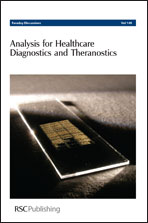Reverse transcription polymerase chain reaction (RT-PCR) is currently a gold standard in identifying influenza A virus, especially H1N1 flu. Typical RT-PCR assays take about 1–2 h for thermocycling, and there is a growing need to further speed up the thermocycling to less than 30 min. Additionally, the PCR assay system should be made portable as a point-of-care detection tool. There have been attempts to further speed up the PCR assays by reducing its volume. There have also been attempts to use droplet microfluidics technology to PCR, primarily to automate the PCR enrichment processes and take advantage of its small volume. In all these attempts, heating and cooling is made by conduction heat transfer. Rapid movements of droplets (immersed in oil) over three different temperature zones make very quick PCR possible, as heating/cooling will be made by convection heat transfer, whose heat transfer coefficients are much higher than that of conduction. We used our newly-invented method of wire-guide droplet manipulations towards very quick RT-PCR. Computational fluid dynamics (CFD) simulation of our system revealed that heating/cooling for each temperature change takes 1–4 s for a 10 μL droplet, as compared to >30 s in the other quick PCRs. Theoretically a 30-cycle process can take as short as 13 s × 30 cycles = 6 min 30 s. The entire system was made as a single instrument, with the components made by a milling machine and a rapid prototyping device. No additional equipment and external computers are required. With this newly developed system, 160 bp gene sequence was amplified from 2009 H1N1 influenza A (human origin). The 30-cycle process took as short as 6 min 50 s for a 10 μL droplet (with additional 4 min for reverse transcription). Its product was confirmed by traditional gel electrophoresis, subsequent imaging as well as gene sequencing, which has been very difficult with the other stationary droplet/nanodrop approaches. The proposed system has a potential to become an extremely rapid, portable, point-of-care tool for detecting influenza A.
You have access to this article
 Please wait while we load your content...
Something went wrong. Try again?
Please wait while we load your content...
Something went wrong. Try again?

 Please wait while we load your content...
Please wait while we load your content...